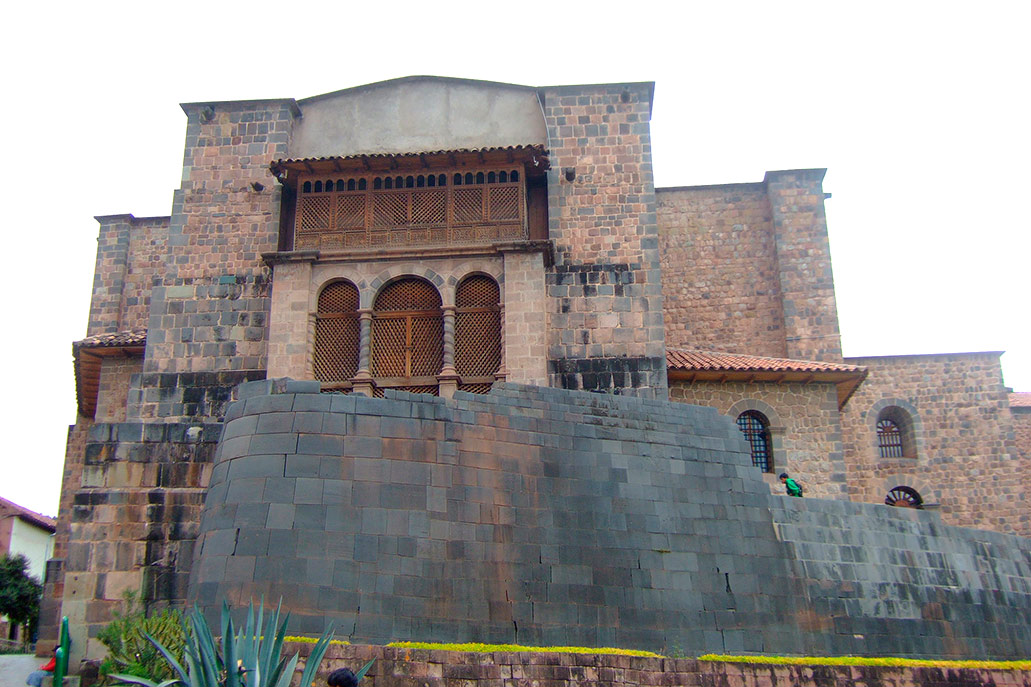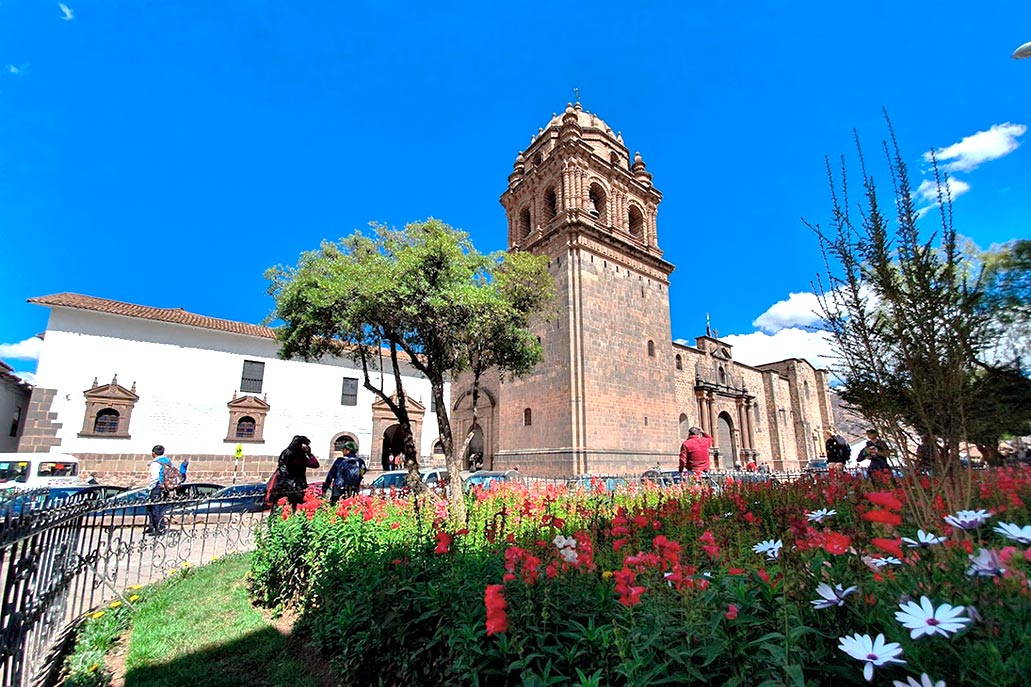Coricancha Temple and Santo Domingo Convent Museum
The Santo Domingo convent and church were built on top of the most important Inca temple. This temple was called Coricancha which comes from two Quechua words, “Cori” and “Cancha”, which can be translated into Spanish as “gold” and “enclosure or place” respectively. Together they would be understood as “Recinto de Oro”. According to some studies, this temple was the most spectacular and best elaborated of all the Tawantinsuyo. After the distribution at the end of the conquest, the site was handed over to the Franciscan order who decided to build the church and the Santo Domingo convent. For this construction they used the remains and some foundations that remained from the Inca temple. Let’s get to know part of the history of these two venues that are combined in one place in the city of Cusco.
Contenido
1. The ancient temple of Coricancha
It is estimated that the Coricancha was created in the year 1438, because it is located in an important territorial point between the Huatanay and Tullumayo rivers. Although it has probably been populated by towns or tribes before the arrival and beginning of the Incas. Archaeologists named one of these tribes as the Ayarmacas. From when the Incas took possession of this territory, there are no very clear records if the area already had or had constructions directed to gods. However, according to some studies it is estimated that one of the walls of the Coricancha solar tambo is 4000 years old. The Incas probably took possession of this place with the intention of beautifying it and showing it as a proper place of worship.
The Coricancha was considered as a middle and exit point, that is, it was an important point for the beginning of the different routes that were traced. Routes known as the ceques. For this reason, it is important to highlight that after the consolidation of Tawantinsuyo as an empire by the Inca Pachacútec, after defeating the Chancas, the Inca began to visualize and imagine the empire that he wanted to possess. This moment meant a new beginning for the political and social regime of the Incas. Therefore, a process of embellishment and organization of the ayllus began. It is estimated that during that moment the construction of the Coricancha or Inticancha was prioritized as the most important temple of the Tawantinsuyo.
The Coricancha was the most important point leaving behind the Sacsayhuaman. Pachacútec, dedicated great efforts to the Coricancha. Making at that time a center of religious and political importance. According to some chroniclers, after rebuilding the Coricancha temple with the best carved stones, followed by adobe walls. He acquired the name of Coricancha, leaving behind the name of Inticancha, the first name of the enclosure. In this way the temple acquired mystical characteristics and with great ornamental finishes. It is estimated that part of the walls was decorated with gold sheets, just as there were temples completely covered in gold and silver sheets.
The Coricancha housed different temples for the worship of Inca deities. As we saw, the most important was the temple to the sun, which is said to have covered a large part of its walls with gold sheets. Something similar happened with the Temple to the Moon that was covered with silver sheets; both buildings also had precious stones.
During the conquest much of its decorations were looted. Some chroniclers mention that this was due to orders from Atahualpa to pay the ransom for Cajamarca. Although some chroniclers agree on this aspect, it is not very clear that all this is true, it must be remembered that during the conquest and later, in the civil war between almagristas and pizarristas, enormous damage was done to this temple and to the city of Cusco. . Where most looting likely occurred.
However, something that chroniclers such as Juan Betanzos, the Inca Garcilaso de la Vega and Juan Santa Cruz Pachacuti highlight, is that in the Coricancha facilities and in other places it was possible to evidence different objects. Traces or objects as souvenirs of some other cultures that existed in the past, something similar to what they did with the huacas that stored all of them in order of antiquity. All this in order to have a historical record of what happened before them. Consequently, it can be said that this enclosure, comprised a place of history, sacredness and above all of great value for the Tawantinsuyo, could be considered as a place where you could see elements as war trophies, but also as a source of peace between victors and vanquished.
Let’s see some structures that lasted until today, which can be seen after entering the facilities of the Santo Domingo Temple. Place where different important elements of Western culture and Inca culture coexist. Which cohabit as a symbol of syncretism.
a. The temple of the Sun
This temple was dedicated and exclusive to the deity Inti or Sun. It is said that different mummies or embalmed bodies of the rulers could be found within these facilities. Thus recognizing their legitimacy as children of the Sun. They were placed according to their antiquity on golden litters.
It occupied a large area and despite that, its walls had gold leaf decorations and also a sculpture of the sun expressed as a supreme deity. This enclosure was cared for by the mamaconas or priestesses of the sun. Its walls have masterful structural precision, so they did not need more than their weight to join them without any problem.
b. The temple of the Moon
This temple was very close to the Temple of the Sun. This was due to the duality formed by the sun and the moon, considered in the Andean worldview as a couple. This enclosure was covered by silver plates and sheets. As in the previous temple, there was a representation of the moon in the form of a sculpture. Also inside, all the coyas were deposited in order of seniority.
c. The temple of the Stars
It corresponds to the Temple of the Moon and they are connected by an alley. In this temple, the main worship of Venus was held. It can be seen in the distance at dawn and was considered the sentinel of the Sun. Venus was called Chasca, which could mean “Morning Star” or simply “Star”.
According to some chroniclers, this temple served as a place of stay for the Inca during ceremonies or rituals. It was also considered as a space dedicated to deifying it. Also in this space you can see a ceremonial niche with different engravings in low relief, this niche fulfilled an important function during the winter solstice.
d. The temple of K’uychi or Rainbow
This temple, together with the Illapa or Lightning Temple, has a similar structure. They have three doors with a simple, equidistant and slightly trapezoidal jamb. According to some chroniclers, a gold sheet with paintings and stone inlays with the colors of the rainbow was found.
2. The Santo Domingo Convent
As we have already seen, the Santo Domingo Convent was built on the remains of the Coricancha temple. It is located quite close to the Main Square, so it can be reached on foot without any problem. It is exactly on the street: Ahuacpinta 659-A in the city of Cusco. It is the convent dedicated to the Order of Preachers.
After dividing the corresponding lots among the conquerors. Some of the territories obtained were donated by their new owners. This was the case of the brother of Francisco Pizarro, who after obtaining the territory corresponding to the Coricancha did not hesitate to donate it. The first Prior of the Santo Domingo Order was Fray Juan de Olías, who after learning of this traveled from Mexico along with other missionaries and founded the foundations of the convent.
It is said that the convent took approximately one hundred years to build. It was officially consecrated in 1633. During the earthquake of 1650, its structure suffered great damage, so it had to be restored, this task took about 30 years. It remains to be noted that the Inca constructions of the place did not suffer any damage.
In the convent facilities you can find a museum that houses pieces found in excavations in the area. Which help explain the Inca worldview and the importance that the stars had for it. Another space that can be found is more aimed at colonial art, in the old chapter house and the sacristy; spaces where pieces of religious art, images, silver liturgical ornaments and some furniture, typical of the time, are exhibited.
The shape it has is made up of 3 naves with their respective domes. The interior features gold silver trim and spectacular wood detailing. Like most of the constructions of the time, it has a baroque architecture, with canvases typical of the Cusco school and carved with the same artistic style. Within these canvases, the life of San Vicente Ferrer and that of Santo Domingo de Guzmán stand out. It also has a pulpit with fine details.
3. Schedule and price
You can visit both places (The Coricancha temple and The Santo Domingo Convent) from Monday to Saturday from 9:00 a.m. to 6:00 p.m. While on Sundays the hours are from 9:00 a.m. to 12:00 p.m. The entrance fee is 15 soles.
By Imachupicchu – Last updated, March 24, 2023

